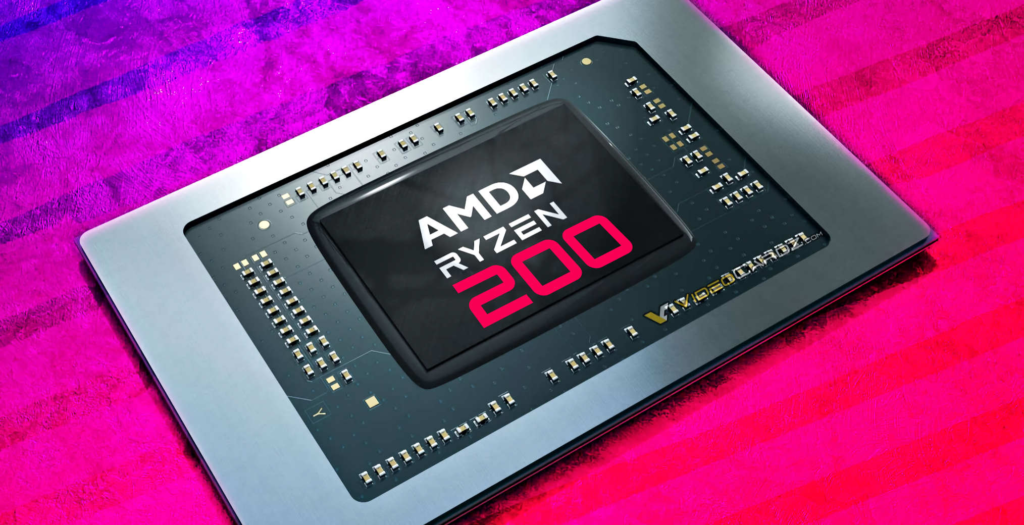AMD is back with a fresh “Ryzen 200” APU under the Hawk Point series, shaking up the entry-level computing market once more. The goal of this strategic update is to compete head-on with Intel’s new “Core 200” product lineup (aimed at budget laptops, handhelds, and mini PCs).
AMD’s Strategy: Refresh with Purpose
The Hawk Point series is just another iteration of AMD’s penchant for refreshing its existing CPU lineup. As it did with the earlier Phoenix series, which is still hugely popular because of its enhancements to AI, the Ryzen 200 series is attempting to make up for not being prosumer in the budget space. AMD prevents the lower-end performance market from becoming a monopoly by offering slightly tweaked yet competitive SKUs.

The Hawk Point refresh, while not revolutionary, brings noticeable changes. These are based on Zen 4 architecture and are likely to offer marginal AI improvements without going too crazy with fundamental counts or GPU configurations. Such balance enables AMD to fulfill shopper requests for cost-efficient solutions for light to modest workloads.
What’s New in Ryzen 200 APUs?
Leaks from Weibo by Golden Pig Upgrade Pack and corroborated by Olrak_29 have revealed that the Ryzen 200 APUs are likely not a generational leap and will instead have little (but important) updates. For example, the Ryzen 7 255H is rumored to be in direct competition to the Core Ultra 7 255H, though it will likely use the same naming scheme for itself, which could further complicate matters for users.
It seems like some sort of refresh of the Ryzen 7 8745HS from the Hawk Point lineup. This variant also offers a set of notable differentiators compared to AMD’s more capable Ryzen AI 300 series, which is notably missing an integrated NPU. However, the Ryzen 200 APUs have improved AI performance, which could make them a viable option in place of budget users that want to use AI-driven tasks.
Targeting Budget Devices and Handhelds
The Ryzen 200 series has landed for budget laptops and handhelds as AMD puts its chips into play for a versatile solution. Team Red’s strategy could also give it a boost in its market among handhelds, since the Phoenix line of handsets were a success, but never had a chance to take hold in the long run.
The Hawk Point refresh bridges device performance gaps for devices with low to medium levels of processing power, especially for the mini PC and hand-held form factors. Differentiating AMD’s Ryzen 200 series from its competitors could put an emphasis on its AI capabilities, even at entry-level price points.
A Timeline to Watch
Ryzen 200 APUs, ready to hit the market by the back end of the year, will line up closely with Intel’s Core 200 Raptor Lake Refresh CPUs. A head-to-head release between two vendors pitting a Windows PC against an OS X desktop could set up a very competitive introduction to the entry-level computing space.

The AMD Hawk Point refresh may not see the same kind of excitement as the Phoenix lineup. However, it would serve to attract the budget-conscious consumer who is looking for a reliable, AI-enabled processor for use in daily activities.
End Note
The Ryzen 200 APUs are a calculated update to help AMD reclaim its place in the budget segment. AMD is aiming for a device performing on the AI front, keeping the core architecture as it was, and it is a path to affordable devices for entry-level. The imminent launch of the Ryzen 200 lineup is preparing to embark on a new war between AMD and Intel.





